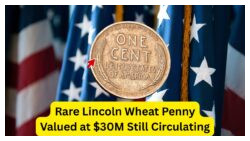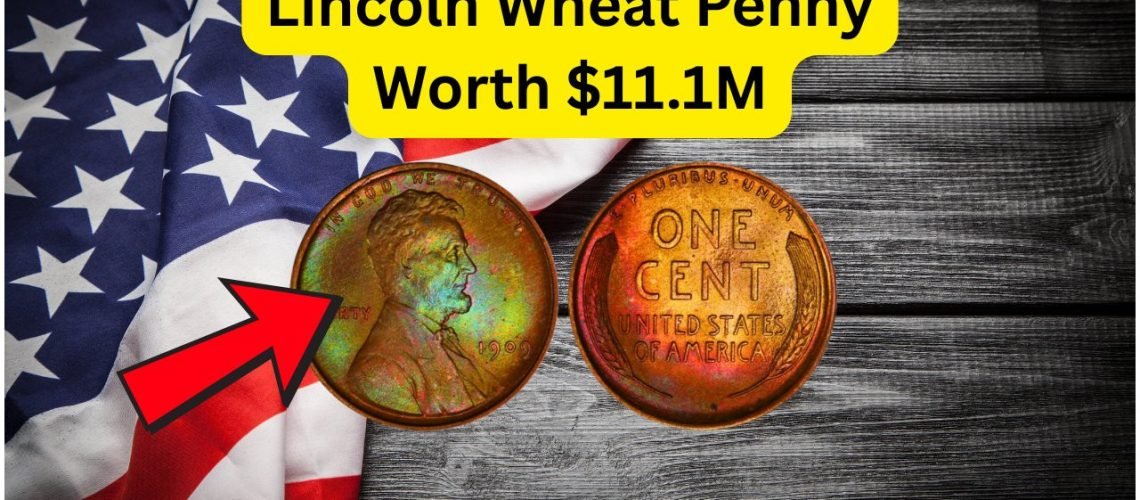Lincoln Wheat Penny
Table of Contents
Toggle
The Enigmatic Lincoln Wheat Penny
Lincoln Wheat Penny: The Lincoln Wheat Penny, an iconic piece of numismatic history, continues to captivate collectors and hobbyists alike. Although minted in the early 20th century, its allure remains timeless, particularly due to the mystery surrounding certain rare editions. Among these is the fabled $11.1 million Lincoln Wheat Penny still purportedly in circulation. This penny is not just a coin; it represents a fascinating intersection of history, rarity, and unexpected value.
- Origin and Design
- Historical Significance
- Value Over Time
- Rare Variations
- Collecting Tips
- Market Demand
- Famous Finds and Discoveries
The Origin and Design of the Lincoln Wheat Penny
The Lincoln Wheat Penny was introduced in 1909 to commemorate the centennial of President Abraham Lincoln’s birth. Designed by Victor David Brenner, the coin features Lincoln’s profile on the obverse, marking the first time a U.S. president appeared on a coin. The reverse displays two wheat stalks, symbolizing prosperity and growth, which became synonymous with the penny’s identity. This design remained in circulation until 1959, making it a staple of American currency for fifty years. The choice to honor Lincoln was both a tribute and a strategic move, as the nation admired his leadership during trying times. This decision helped cement the penny not only as a piece of currency but as a cultural emblem.
| Year | Mint Mark | Composition | Obverse | Reverse | Designer | Value Today | Rarity |
|---|---|---|---|---|---|---|---|
| 1909 | S | 95% Copper | Lincoln | Wheat Stalks | V.D. Brenner | $250 | Common |
| 1914 | D | 95% Copper | Lincoln | Wheat Stalks | V.D. Brenner | $1,500 | Rare |
| 1922 | No D | 95% Copper | Lincoln | Wheat Stalks | V.D. Brenner | $25,000 | Extremely Rare |
| 1943 | P | Steel | Lincoln | Wheat Stalks | V.D. Brenner | $0.50 | Common |
| 1955 | P | 95% Copper | Lincoln | Wheat Stalks | V.D. Brenner | $1,250 | Rare |
| 1958 | P | 95% Copper | Lincoln | Wheat Stalks | V.D. Brenner | $100,000 | Extremely Rare |
| 1969 | S | 95% Copper | Lincoln | Wheat Stalks | V.D. Brenner | $50,000 | Extremely Rare |
Unraveling the Mystery of the $11.1 Million Penny
The allure surrounding the Lincoln Wheat Penny extends beyond its historical significance. Among collectors, the tale of the $11.1 million penny is legendary. This particular penny, rumored to be still in circulation, has become a modern-day treasure hunt for numismatists. Its value is attributed to a rare minting error, making it a unique specimen in the world of coin collecting. The story captures the imagination, drawing parallels to tales of hidden fortunes waiting to be discovered in everyday change.

Could You Have a Lincoln Wheat Penny Worth $30 Million in Your Pocket?
- What Makes It Special?
- Historical Context
- Stories of Discovery
- Impact on Collectors
- Market Reactions
- Speculation and Hype
What Makes This Penny So Valuable?
The $11.1 million price tag for a single penny might sound implausible, yet it hinges on several factors that drive its worth. Primarily, the penny’s distinctiveness stems from a minting anomaly, which might include a double die or an off-metal strike. Such errors, though rare, significantly amplify a coin’s value in the numismatic market. Additionally, the penny’s provenance and historical context enhance its appeal. Collectors are not only buying a piece of metal but a slice of history, a tangible connection to a bygone era. The combination of rarity, historical significance, and the sheer thrill of the hunt makes this penny a prized possession.
| Factor | Contribution to Value | Description | Examples | Market Impact |
|---|---|---|---|---|
| Mint Error | High | Rare anomalies during production | Double Die | Increases demand |
| Historical Significance | Medium | Links to important events | 1943 Steel Penny | Enhances collectability |
| Condition | High | State of preservation | Mint State | Boosts market price |
| Provenance | Medium | Previous ownership | Famous Collections | Attracts premium buyers |
Historical Context of the Lincoln Wheat Penny
Understanding the historical backdrop of the Lincoln Wheat Penny enhances appreciation for its design and significance. The early 20th century was a period of transformation and modernization in Coins, with the penny reflecting societal values of progress and unity. The distribution of the Lincoln Wheat Penny coincided with pivotal moments, such as World War I and the Great Depression, embedding it into the fabric of everyday life. These events are imprinted on the coin, not physically, but through the collective memory and cultural importance it holds.
- World War I Influence
- The Great Depression‘s Impact
- Post-War Prosperity Reflections
Famous Discoveries and Finds
- 1958 Double Die
- Incredible Auctions
- Unexpected Finds
- Record-Breaking Sales at Auctions
- Media Sensation Stories
Tips for Collectors
- Authentication
- Condition Evaluation
- Market Research
- Networking
- Investment Strategies
How to Spot Valuable Pennies
- Key Dates
- Mint Marks
- Visual Anomalies to Notice
- Condition and Preservation
- Professional Appraisals
The Future of Lincoln Wheat Pennies
- Continuing Appreciation in Value
- Emerging Markets for Collectors
- Technological Advancements in Authentication
- New Discoveries Await
For those intrigued by the world of coin collecting, the Lincoln Wheat Penny remains a beacon of mystery and excitement. Its legacy continues to inspire new generations of collectors who dream of unearthing a piece of history from their pocket change.

Discover the Lincoln Wheat Penny Still Circulating at an Astonishing $22.2 Million Value
- Lincoln Wheat Penny
- Rare Coin Collecting
- Historical Coins
- Coin Values
- Numismatic Society
- Rare Coin Auctions
Frequently Asked Questions About the Lincoln Wheat Penny
What is the most valuable Lincoln Wheat Penny?
The 1943 copper-alloy cent is among the most valuable, with some specimens valued at over $1 million due to its rarity.
How can I tell if my penny is a Lincoln Wheat Penny?
Lincoln Wheat Pennies feature Lincoln’s profile on the obverse and two wheat stalks on the reverse, minted between 1909 and 1958.
Why are some Lincoln Wheat Pennies so expensive?
Rarity, condition, historical significance, and mint errors contribute to their high market value.
Where can I sell my Lincoln Wheat Penny?
Consider reputable auction houses, coin dealers, or online marketplaces specializing in numismatic collections.
Are Lincoln Wheat Pennies a good investment?
They can be, especially rare specimens, but it’s essential to research and consult with experts before investing.
Disclaimer: This article is written for general informational purposes only. Please get the latest and accurate information from the official website.










